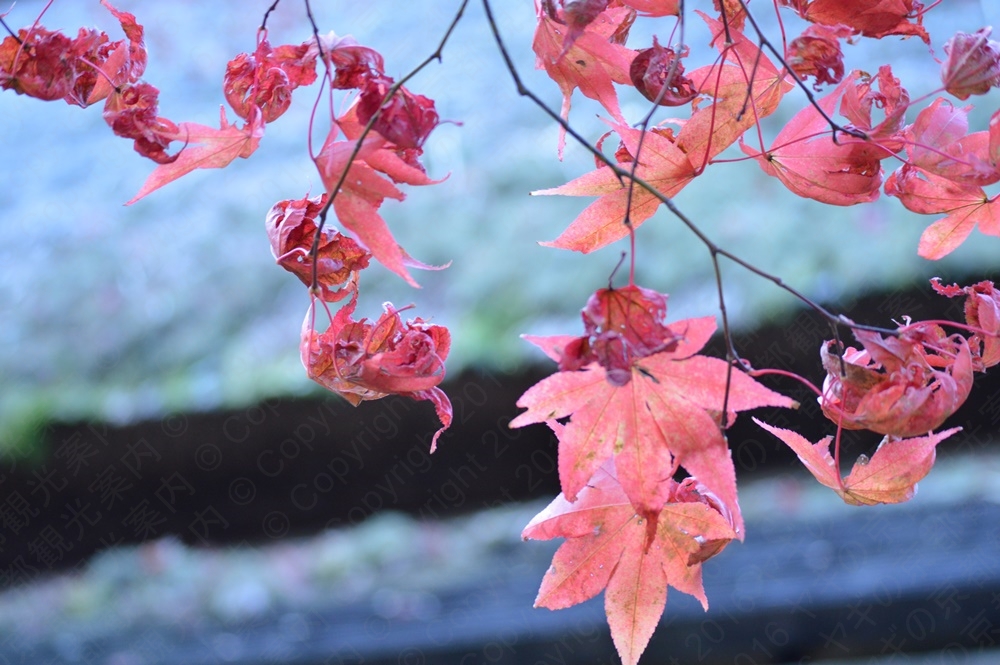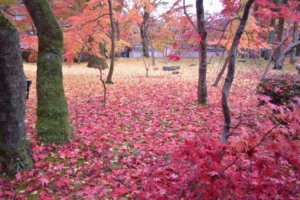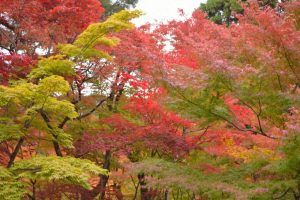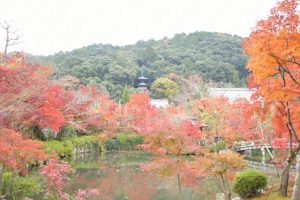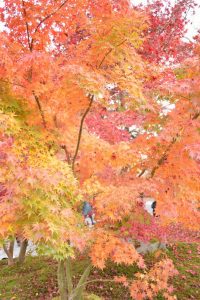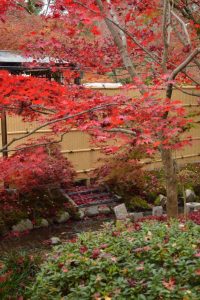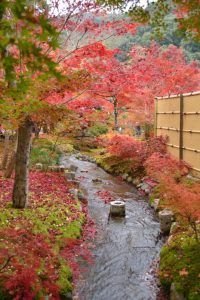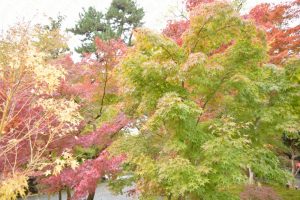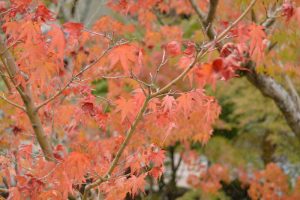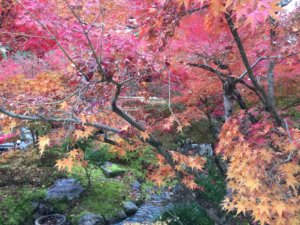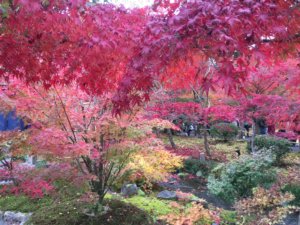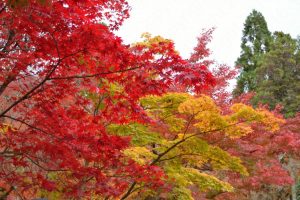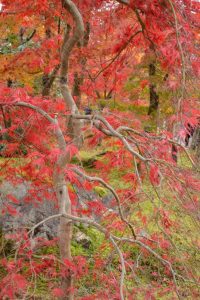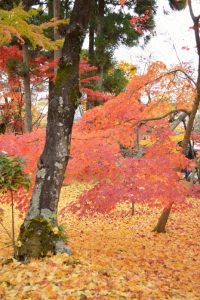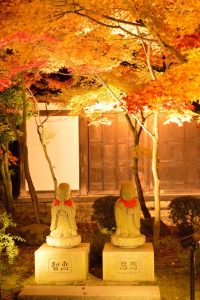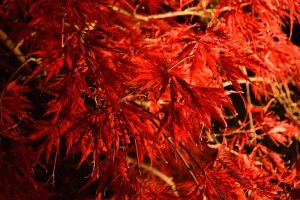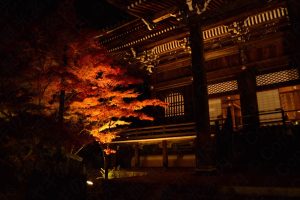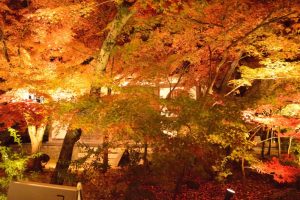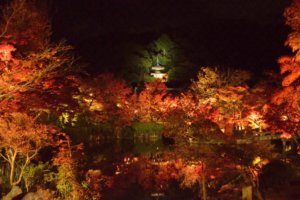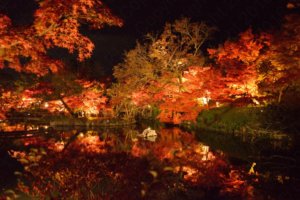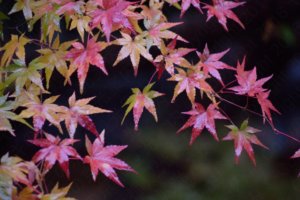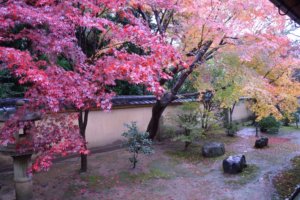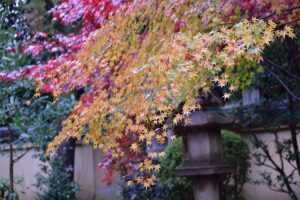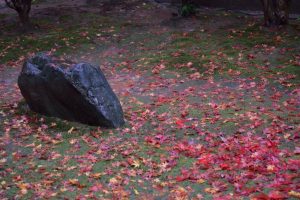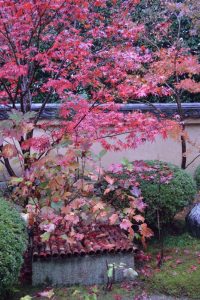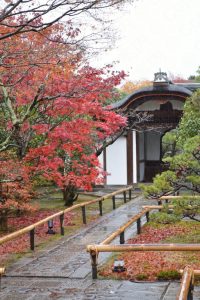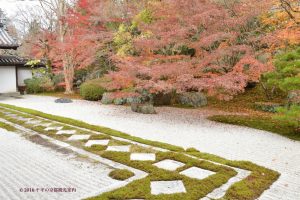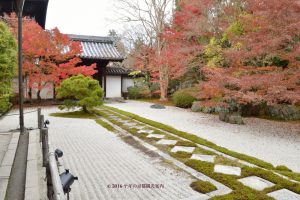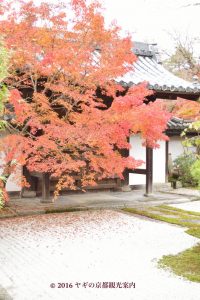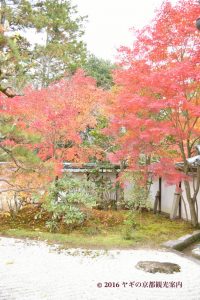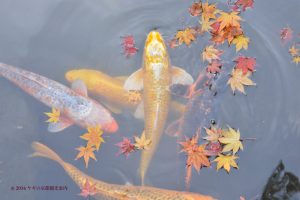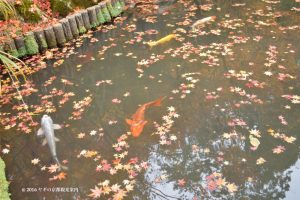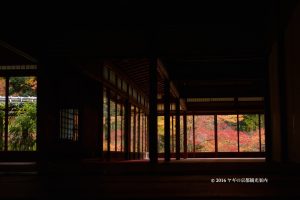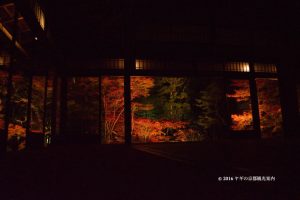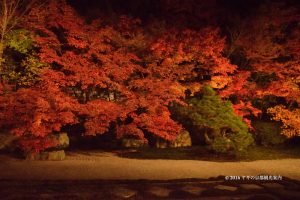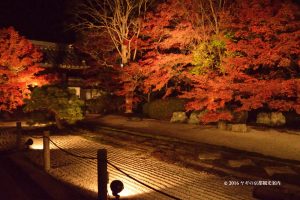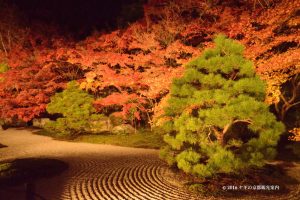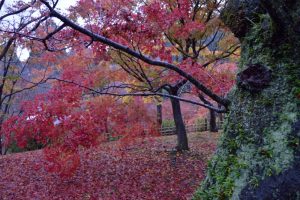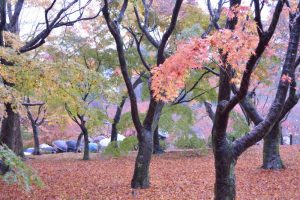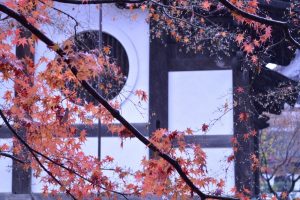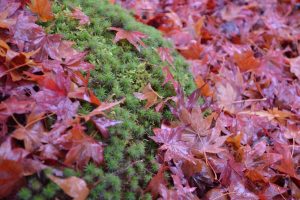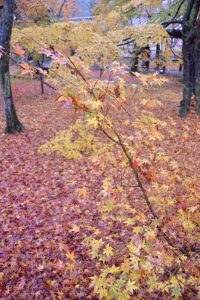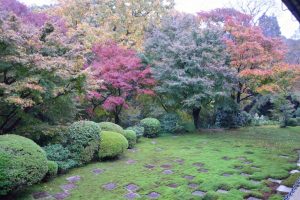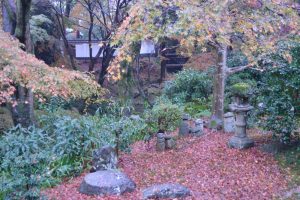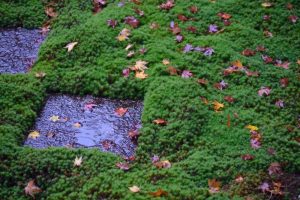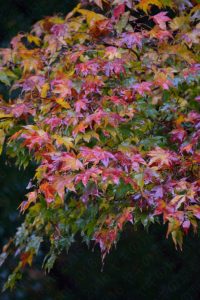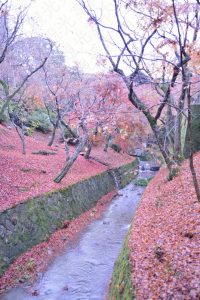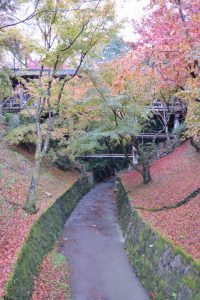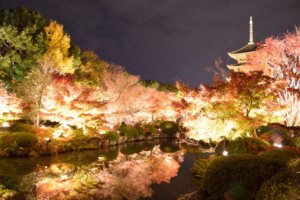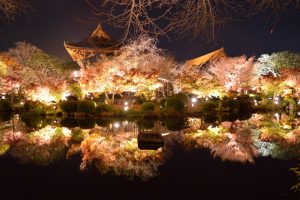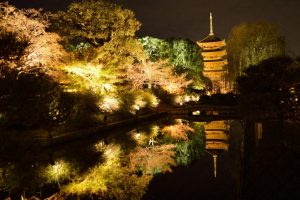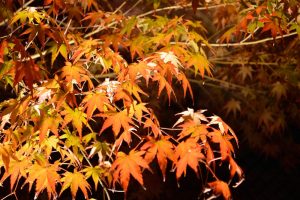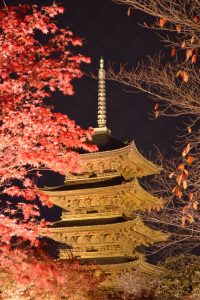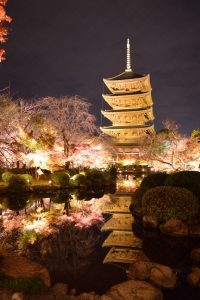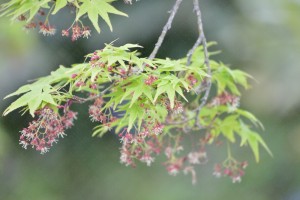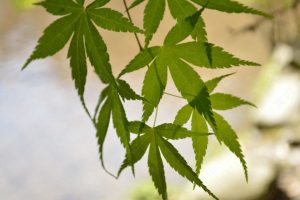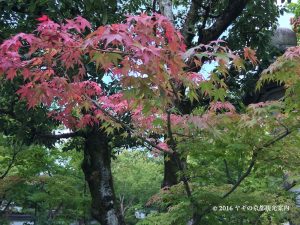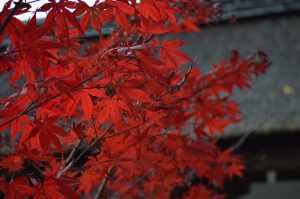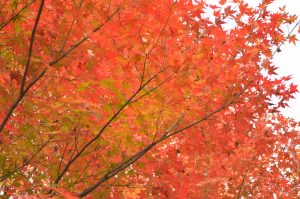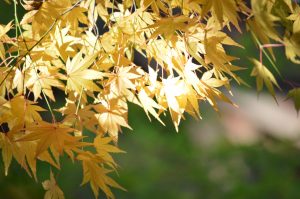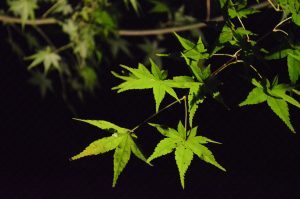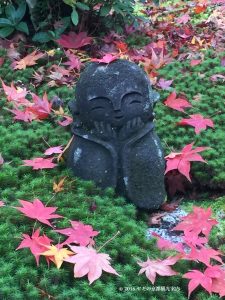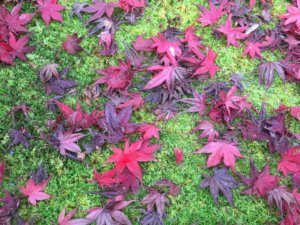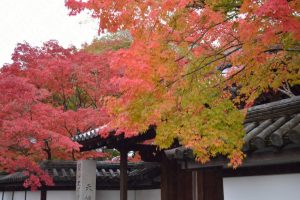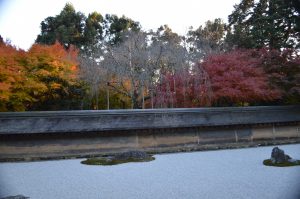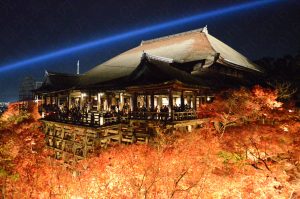- The forecast of the best time to admire autumn leaves 2018 in Kyoto
- The top 5 spot to enjoy the autumn leaves/colors in Kyoto
- The way to admire the autumn leaves/colors, or “Koyo”
The forecast of the best time to admire autumn leaves 2018 in Kyoto
A goat Kyotoite shows you the best time and best spot to admire “Autumn leaves/Autumn colors 2018” in Kyoto! In addition to them, you can learn the ways Kyotoite take to enjoy them!
It is hard to forecast the best time exactly. Usually, in we can see the best autumn leaves in a short period from mid-november to the 1st week of December.
In addition to the difficulties of forecasting, we have TWO best times to adore autumn leaves; the colors in full bloom and the moment in which leaves begin to fall. It may sounds strange to enjoy fallen leaves. Don’t worry, we discuss the reason later.
Attention: Any information about temples like opening hours, admission fee, and so on are subject to be changed.
The top 5 spot to enjoy the autumn leaves/colors in Kyoto
No.1 Eikando temple a.k.a. Zenrinji temple
Eikando is the best place to see autumn leaves in Kyoto. It is famous for beautiful autumn leaves since Heian period (794-1192). It has peculiar “Kannon” statue called “Mikaeri Kannon (Kannnon who turns around)” .
The best time to enjoy the autumn leaves in Eikando temple.
The best time is the time when leaves begin falling. In 2016, the best time was the 3rd week of November. In 2017, the time might come earlier.
The picture above is taken at the best place in the best time. Red maple and yellow ginkgo leaves had just fallen on the ground. They still contained water inside and it made the color of leaves vivid. The state lasts only a couple of days.
Autumn leaves in Eikando temple
The garden
As we see, we can see leaves in vivid red, pink, and vermilion at Eikando temple. To my opinion, we can see the best red and vermilion leaves in Japan.
Illumination
We can also admire autumn leaves in night time. This is “Light-up (The word means “Illumination or illuminated something)” occasion. It gives us quite different impression as the daytime.
Eikando has small pond and we can enjoy autumn leaves in “Mizukagami”.
About Eikando temple
Official name: Shujyu-raigouzan muryoujyuan Zenrinji
Address: Eikando-cho 48, Sakyo ward, Kyoto city,〒606-8445
Phone 075-761-0007
FAX 075-771-4243
website Eikando official page (English)
Open hours 9:00~17:00
Admission fee adult 600 yen under 18 year old 400 yen
The time required: 1 hour~
Attention: When we enter the temple we usually wait in line around mid-October to December.
How to get to Eikando temple?
From JR Kyoto station
At subway Kyoto station, take Karasuma line to Karasuma Oike station. At Karasuma Oike station, change train to subway Tozai line to Keage station. It takes about 15 minutes from Keage station to Eikando.
Kyoto city bus
NO.5 Nanzenji Eikando michi bus stop.
No.32、93、100、102、203、204 Higashi temno cho bus stop.
Attention In the autumn leaves season, buses, mostly No.5、100、102 are often crowded. It would be better to go to Eikando by train. If you wanted more information, check the link below.
No. 2 Korin-in temple
I’m afraid you have never heard of the temple. It is one of the most underrated place in Kyoto. Even Japanese tourists pay scarce attention to it because it doesn’t open to public usually and we can seldom find it on magazines and web-sites. In autumn, it opens to casual visitors for around 2 months.
The best time to enjoy the autumn leaves in Eikando temple.
The best time is the time when leaves begin falling. In 2016, the best time was the 4th week of November. In 2017, the time might come earlier. The best time in many places in Kyoto city was the 3rd week of November but that of Koirnin was 4th week. The best time is when it rains.
Autumn leaves in Korin in temple
As you see in the pictures above, leaves in Korinin temple are not “vivid” as these of Eikando temple’s. The colors are very sensitive as though only one glance could make all the leaves go away.
These colors are indigenous to Korinin temple. If you wanted to experience so-called “Wabi-sabi” in autumn leaves, or adore autumn colors in complete calmness, Korinin temple would be the best place to visit.
About Korinin temple
Official name: Korinin
Address: Daitokuji-cho 80, Kita ward, Kyoto city,〒603-8231
Phone 075-491-7636
FAX Not available
website Kyoto syunjyu home page (Japanese)
Open hours 10:00~16:00
Open dates Oct. 7th ~ Dec.17
Admission fee adult 600 yen 13~18 year old 400 yen 7~12 year old 300 yen
The time required: 30 minits ~
Access to Korinin temple
Bus stops
Daitokuji-mae bus stop (Kyoto city bus no. 204、205、206、101、102)
No.3 Tenjuan temple
Tenjuan temple is also an underrated place in Kyoto. Even in autumn, it is not crowded with visitors. I believe it is not popular for foreign tourists but one of the best place to visit in Kyoto.
Tenjuan is a sub-temple of famous Nanzenji temple and enshrines the founder of Nanzenji temple. It is located in the area of Nanzenji temple and you can enjoy both of temples in one day. The dry garden adjacent to Hojo, a residence of a monk’s is believed to have beeb designed and built by Kobori Ensyu, the artist of gardening in Edo period. In addition to it, the garden has another garden surrounding a small pond (the south garden).
Tenjuan has illumination at night time and you can visit there at day and night time.
The best time to enjoy the autumn leaves in Tenjuan temple.
The best time is the time when leaves begin falling. In 2016, the best time was the 3rd week of November. In 2017, the time might come earlier.
The autumn leaves in Tenjuan temple
The dry garden
The dry garden gave us “modern” impression to us thanks to the square rocks in line. Traditional rock garden , like the rock garden in Ryoanji temple, doesn’t have rocks in an order.
When leaves starts falling, the best time to adore the autumn leaves comes.
The south garden
In the south garden, we can adore fallen leaves with carps. In Kyoto, many temples have pond and maple trees but only Tenjuan has the beautiful leaves and carps.
The main hall
Main hall is not open to visitors usually. We cannot enter it even in autumn at day time.
But at night time, visitors have the privilege to get into the hall. The illuminated garden is so amazing.
Illumination
In the calm light, the leaves are warm and bright. This is the best illuminated Zen garden in Kyoto.
About Tenjuan temple
Official name: Zuiryu-zan Tenjuan
Address: Nanzenji fukuchi-cho, sakyo ward, Kyoto city, 〒606-8435
Phone 075-771-0744
FAX Not available
website Not available
Open hours 8:40~17:00
Admission fee adult 400 yen 16~18 year old 300 yen 7~15 year old 200 yen
The time required: 30 minits ~
Access to Tenjuan temple
About 10 minutes walk from Subway Keage station.
No. 4 Tofukuji temple
Tofukuji temple is one of the most popular place to see autumn leaves in Kyoto. In the days of old, it is famous for cherry blossoms but the temple substituted them for maple trees. In autumn, it always crowded with many visitors. You might wait in line before entering the gate.
The best time to enjoy the autumn leaves in Tofukuji temple.
The best time is the time when leaves begin falling. In 2016, the best time was the 3rd week of November. In 2017, the time might come earlier.
Autumn leaves in Tokukuji temple
Around Tsuten bashi bridge
The autumn leaves in Tofukuji temple seem to resemble that of Eikando’s. I’m sure both leaves stunning colors but we have peculiar expression: the trees exquisitely and leaves turn into each color elaborately.
The honbo garden
The garden adjacent to the north side of the main hall. It was designed by Shigemori Mirei, the best gardening artist in the 20th century. The leaves on mosses are amazing.
The dry garden was also designed by Shigemori. We have a casual glance at the leaves in red.
About Tofukuji temple
Official name: Enichi-san Tofukuji
Address: Hon-cho 15-778, Higashiyama ward, Kyoto city, 〒606-0951
Phone 075-561-0087
FAX 075-533-0621
website Tokuji official site (English)
Open hours
April to October 9:00~16:00
November to mid-December 8:30~16:00
Mid-December to March 9:00~15:30
Admission fee
Tsuten bashi bridge and Kaizan do: adult 400 yen 7~15 year old 300 yen
Main Hall: adult 400 yen 7~15 year old 300 yen
The time required: 1 hour ~
Access to Tofukuji temple
From JR east/Keihan Tofukuji station, it takes 10 minutes usually but in the season of autumn leaves, it might take about 10-30 minuets.
No.5 Toji temple
When the emperor Kanmu moved the capital to Kyoto, he admitted constructions of only 2 Buddhist temples in Heiankyo. Toji is one of them and still located in the same place as 1200 years ago. It is the cantral temple of the esoteric Buddhism of Shingon school introduced by Kukai.
In the Kodo Hall, there is a so-called “3D-mandara”. Mandala is a schema of the universe and the enlightened mind. Inside of the Kodo hall, there are statues of the Buddhist deities and they represents mandala.
The best time to enjoy the autumn leaves in Tofukuji temple.
The best time is the time when leaves begin falling. In 2016, the best time was the 3rd week of November. In 2017, the time might come earlier.
Autumn leaves in Toji temple
The best time in Toji is night time in illumination. We can see the best illuminated autumn leaves in Kyoto. The temple has the most beautiful “Mizukagami” in Kyoto.
About Toji temple
Official name: Kyo-oh Gokokuji
Address: Kujo-cho 1, Minami ward, Kyoto city, 〒601-8473
Phone 075-691-3325
FAX 075-662-0250
website Toji official site (English)
Open hours and admission fee: see the official site
The time required: 1 hour ~
Access to Toji temple
15 minutes walk from JR Kyoto station.
Kyoto city bus
No. 205: Get off at Tojimichi bus stop.
No. 207: Get off at Toji-higashi mon-mae bus stop.
Autumn leaves/colors in video
We discussed a general ranking. Enjoy that of in 2018.
The way to admire the autumn leaves/colors, or “Koyo”
What is “Koyo”?
Japanese green maple leaves turn into red, yellow, and vermilion in autumn. Maple in these colors are called “Koyo (autumn leaves/colors)”. In every autumn, Japnese people love to do “Koyo-gari”. It is one of the most popular annual event today and its history dates back at least 7th century. “Koyo-gari” literally means “Koyo hunting”. In the days of old, people broke a branch that had leaves turned in these colors off tree and admired them. That is the reason why it is called “Hunting”. Today, we don’t broke a branch but enjoy to see leaves on the trees.
The process of growing into amazing colors
Around late spring, maple trees have tiny flowers under leaves.
In early summer, flowers are gone and leaves are in the state we call “Ao momiji (Green maple)”.
In mid-summer, “Ao momoji” is in the most beautiful green.
In early autumn, green leaves turn into red gradually.
In the end of Autumn, they grow into red.
The colors of autumn leaves/colors
“Koyo” means “Red leaves” but maple leaves do not turn into only red actually.
Red
You might see red leaves in magazines or websites but pure red is rather rare color.
Vermilion
Vermilion is the most popular color of autumn leaves.
Yellow
Yellow is the color we can see in many places.
Green
Some leaves remain green even in autumn.
Pink
Pink is popular but we seldom see the beautiful one.
The colors in our sight
We can see these colors at one time usually.
The ways to adore “Koyo”
Looking at leaves themselves
The usual way. Just look at leaves.
Fallen leaves
We love leaves fallen on the ground, especially on something green like moss.
Illuminated
Many Koyo site has “Raito appu (Illumination)” in night. We have a quite defferent impression from that of the day time.
Mizukagami
We admire reflection on a surface of pond. We love to enjoy something not directly.
In rain
Rain falls make leaves glossy and the colors of them stand out.
With carp
We enjoy both the colors of leaves and carps.
Gradualness
It seems as if leaves were growing from green to red.
In dry garden
Traditional dry garden doesn’t have maple trees inside of itself. We love to see the leaves out site of the garden. This is the Japanese art of admiring the garden.
With anything you like
This is the most popular way we enjoy autumn leaves. We not only enjoy the leaves themselves but also temple, shrine, and so on.

